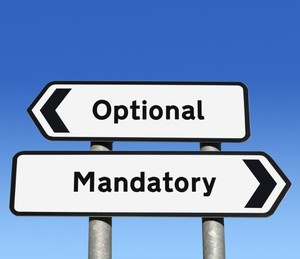Last update: 18 November 2011
The regulatory body for approval of medicines of the EU is EMA.
When using a centralised procedure, which covers marketing authorisation for the whole of the EU, generic medicines are approved by its regulatory body, EMA.
According to Article 10(1) of Directive 2001/83/EC, as amended, the applicant is not required to provide the results of pre-clinical tests and clinical trials if he can demonstrate that the medicinal product is a generic medicinal product of a reference medicinal product which is or has been authorised under Article 6 of Directive 2001/83/EC, as amended, for not less than 8 years in a Member State or in the Community.
A generic medicinal product is defined as a medicinal product that has:
- the same qualitative and quantitative composition in active substances as the reference product, the same pharmaceutical form as the reference medicinal product,
- and whose bioequivalence with the reference medicinal product has been demonstrated by appropriate bioavailability studies.
EMA has the following guidelines specific to generic medicines:
EMA procedural advice for users of the centralised procedure for generic/hybrid applications EMA/544563/2010
Date: January 2011
www.ema.europa.eu/docs/en_GB/document_library/Regulatory_and_procedural_guideline/2009/10/WC500004018.pdf
Timetable for generics applications EMEA/327896/2005
Date: 20 December 2005
www.ema.europa.eu/docs/en_GB/document_library/Other/2009/10/WC500004935.pdf
Marketing authorisation applications (MAAs) for generics should follow the structure of the common technical document (CTD) format, as for any other MAA, however, there are some specific requirements for generics:
Module 1
Generic applicants need to summarise the evidence demonstrating that the medicinal product is a generic of a reference medicinal product. The summary should include qualitative and quantitative composition of the active substance(s), its pharmaceutical form and safety/efficacy profile of the active substance(s) compared to the reference medicinal product, as well as details related to the bio-availability and bio-equivalence, where necessary.
In cases where there is a safety concern with the reference medicinal product, an EU risk management plan is required.
Module 2
Module 2 must include the quality overall summary, non-clinical overview and clinical overview, non-clinical and clinical summaries can be provided, but they are only mandatory if new additional studies have been provided within the documentation. The non-clinical and clinical overviews should focus on the following:
- Summary of impurities present in batches of the active substance(s) (and where relevant decomposition products arising during storage).
- Bioequivalence studies or a justification why studies were not performed.
Guideline on the investigation of bioequivalence CPMP/EWP/QWP/1401/98 Rev. 1/ Corr **
Date: 20 January 2010
www.ema.europa.eu/docs/en_GB/document_library/Scientific_guideline/2010/01/WC500070039.pdf
- Update of published literature relevant to the substance.
- Discussion of claims in the SmPC: claims not known from or inferred from the properties of the medicinal product and/or its therapeutic group should be discussed in the non-clinical/clinical overviews/summaries and substantiated by published literature and/or additional studies.
- Additional safety/efficacy information should be provided when different salts, esters, ethers, isomers, mixtures of isomers, complexes or derivatives of the active substance of the reference medicinal product are used, showing that the properties of the generic are not different.
Module 3
A complete Module 3 of the CTD should be submitted.
Module 4 and Module 5
For a generic it is not necessary to provide the results of toxicological and pharmacological tests or the results of clinical trials. The results of bioequivalence studies performed where appropriate should be included. When different salts, esters, ethers, isomers, mixtures of isomers, complexes or derivatives of the active substance of the reference medicinal product are used, additional information providing proof that their safety and/or efficacy profile is not different from that of the reference medicinal product is required.
Applicants are also encouraged to request a pre-submission meeting with the EMA around six months prior to submission to clarify any outstanding points.
Related articles
The current EU regulatory framework governing biosimilars
Regulatory recommendations for biosimilars in the EU








 0
0











Post your comment